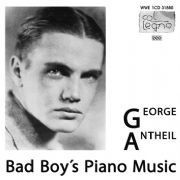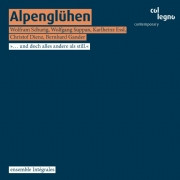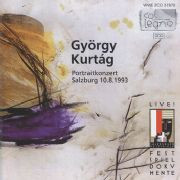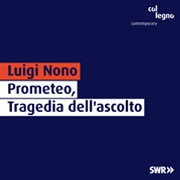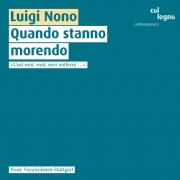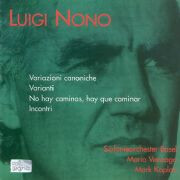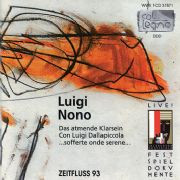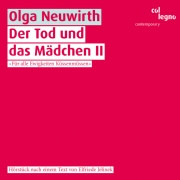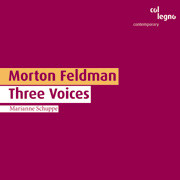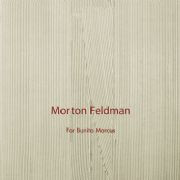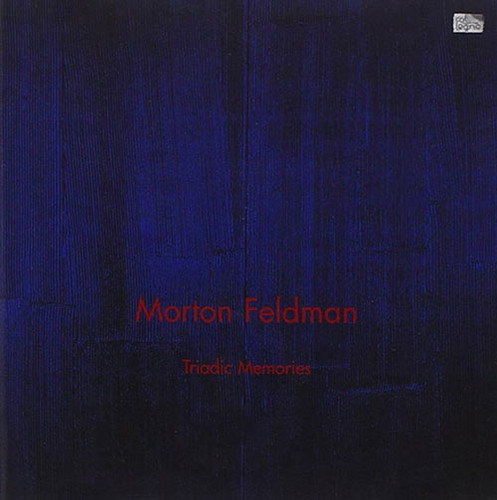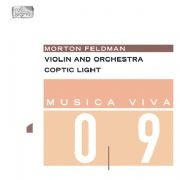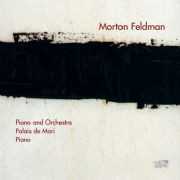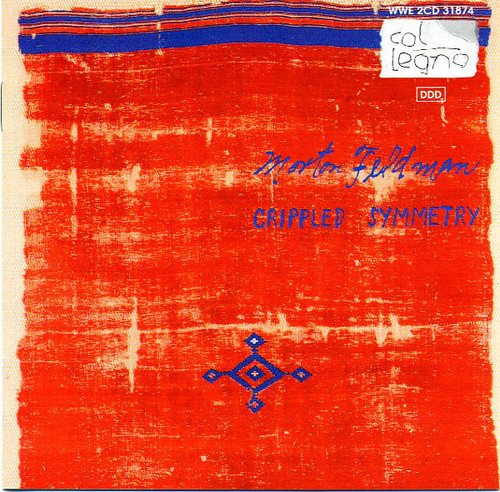★Col Legno
Oboe plus
Right at the start we are welcomed by Le sexe du noyé by Walter Feldmann, which (besides requiring exceptional technical skill) keeps a tight rein on the oboist, even as far as inhaling and minute movements are concerned. But Matthias Arter does not …
14 Récitations
A songbird that stops singing must die. Georges Aperghis demands a similar degree of self-sacrifice of the performer of his 14 Récitation.
Piano Pictures
Now, which are the points of contact between these two composing gentlemen? "In both composers, a childlike quality shows in their indifference (or impartiality) towards the utilizable musical material: 'sophisticated' and 'lesser' styles, ragtime an…
Bad Boy\'s Piano Music
George Antheil was not only always ahead of his time; he was also an alert contemporary and ready to take in all artistic trends of the first half of the 20th century. There was hardly a kind of music he wasn't aware of, hardly a madness he didn't ta…
Alpenglühen
Is there an 'Austrian identity' in contemporary music? The ensemble Intégrales, intent on securing evidence, commissioned five original, or even out-of-the-ordinary, composers to come up with made-to-measure outfits for the ensemble. And lo and behol…
Étude sur les Mouvements rotatoires / 24 Préludes
The master of partial tones: Ivan Wyschnegradsky continued Scriabin's harmonic principles and (successfully) searched for new tone colors.
Portraitkonzert Salzburg 10.8.93
Recorded in Salzburg on August 10, 1993, this recording documents a portrait concert devoted to the music of György Kurtág that spans most of his career, from his Op. 1, first string quartet, written when he was in his forties, to works of recent yea…
Prometeo, Tragedia dell\'ascolto
One of the most significant musical works of the twentieth century is now available in an archive-quality recording. Only now, using surround-sound technology can the twenty-six channels be balanced out and distributed, spatially and dynamically, wit…
Quando Stanno Morendo
Works of art are often triggered by private events. Sarà dolce tacere (1960), for example, was written on the occasion of the 40th birthday of Bruno Maderna, Nono's (former) teacher and close friend; and also in 1960 Nono wrote Ha venido for his daug…
Variazioni canoniche sulla serie dell\' op. 41 di Arnold Schoenb
"All my works always start out from a human incentive: an event, an experience, a text in our lives leads to my instinct and my conscience and wants me to bear witness, as a musician and as a man." This is how Nono, in 1960, described his motivation …
Das atmende Klarsein
Researching into the fringe ranges of hearing, and actually going to the limits: electronics – live or prerecorded – was one of the tools employed by Luigi Nono in pursuance of this object. In his work Das atmende Klarsein he moreover endeavored to e…
Todesraten
The black widow and the farmer’s son thrown off track by an addiction to steroids often hold forth on their views, insights and the absurdities of life. Every now and then, however, the simul-taneous utterance of text and the very complexity of their…
Der Tod und das Mädchen II
The tale of the Sleeping Beauty set somewhere between science fiction and biting social criticism. In her texts Elfriede Jelinek explores the states of sleep, of apparent death, of semi-consciousness, or of being barely awake – and in doing so invest…
Three Voices
This piece is sung by the Swiss “deep voice”, Marianne Schuppe in trio with herself, a feat made possible by playing back recordings of her own voice. This is not minimal music; melodic lines arise, sensual, beautiful, and undoctored, swaying like a …
For Bunita Marcus
For Bunita Marcus was written in 1985. "This work, which I have dedicated to Bunita Marcus, [...] deals with the death of my mother, and with the notion of a slow death. I simply didn't want the piece to die. So I used this unwillingness compositiona…
Triadic Memories
In other works, such as For Philip Guston, which continues for several hours, Morton Feldman actually would go beyond the bounds of possibility, also overtaxing the concentration of both his musicians and his audience. Nevertheless, like these other …
Violin and Orchestra / Coptic Light
Morton Feldman dedicated a whole series of compositions to the relationship between solo instruments and the orchestra: after Cello and Orchestra (1972), Piano and Orchestra (1975), Oboe and Orchestra (1976) and Flute and Orchestra (1977/78) his Viol…
Orchestral Works & Chamber Music
In the early 1970s Feldman increasingly turned his attention to works for orchestra, in most cases combined with a solo instrument, like Piano and Orchestra (1975). One aspect that was important to him in all of these works was a research into sound,…
Piano and Orchestra, Palais de Mari, Piano
In the early 1970s, Feldman increasingly turned his attention to works for orchestra, in most cases combined with a solo instrument. The compositions dating from this period include, among many others, Cello and Orchestra (1972) or Oboe and Orchestra…
Crippled Symmetry
Music and carpets? Well, the latter's slightly irregular patterns certainly inspired Morton Feldman to write his Crippled Symmetry (1983). "With Feldman, composing more and more takes on the nature of writing a diary; he weaves and knots his sounds l…



